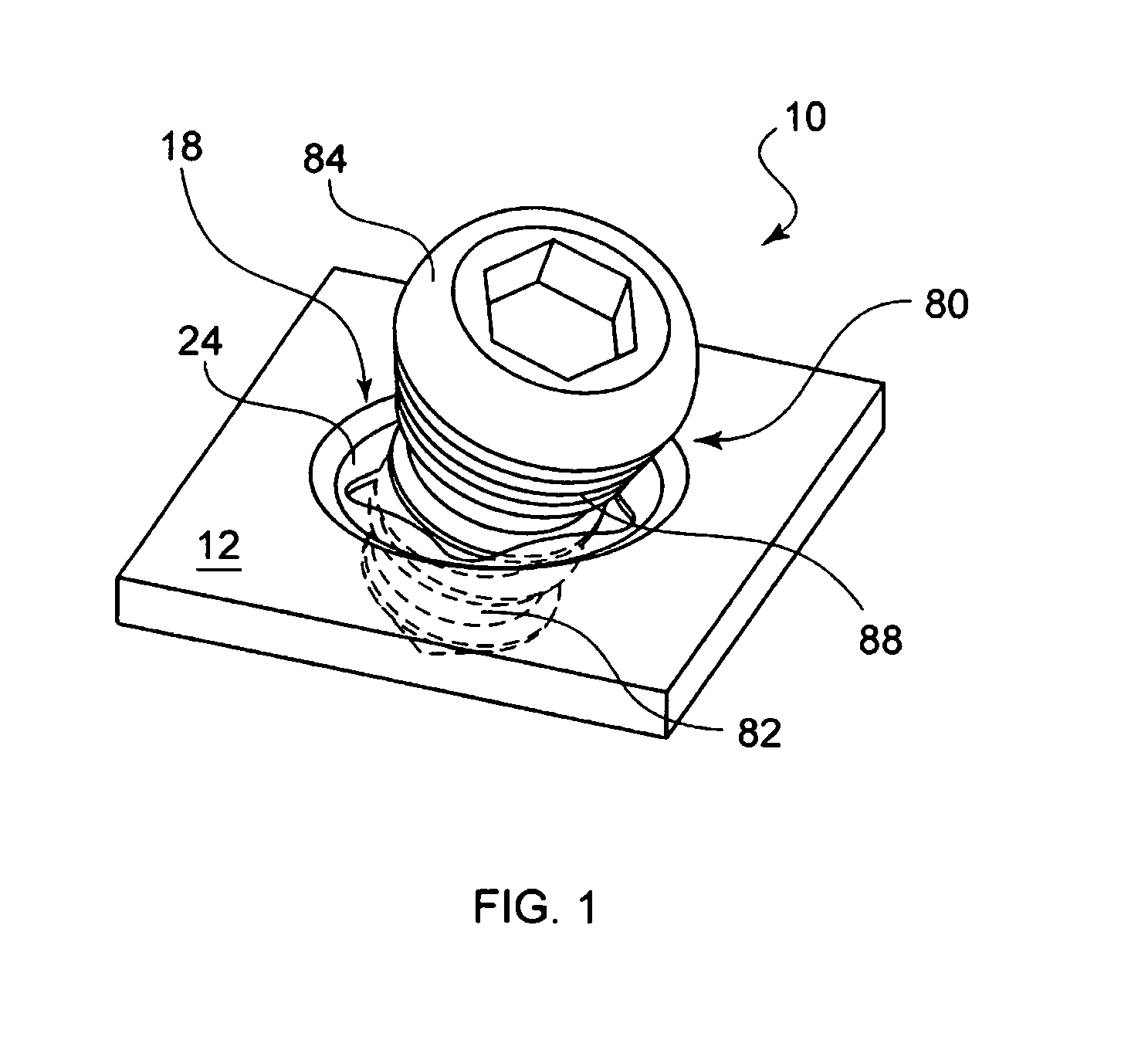Systems and methods for using polyaxial plates
a technology of polyaxial plates and polyaxial plates, applied in the field of systems, can solve the problems of limiting the use of locking screws, unidirectional locking screws, fragments shattered, etc., and achieve the effect of contouring and tightening the profil
- Summary
- Abstract
- Description
- Claims
- Application Information
AI Technical Summary
Benefits of technology
Problems solved by technology
Method used
Image
Examples
Embodiment Construction
I. Plates with Polyaxial Openings Generally
[0102]Embodiments of the present invention provide a bone fixation assembly that can accept and fix fasteners at a plurality of angles. A specific embodiment of a bone fixation assembly 10 is shown as a bone plate 12 and fastener 80 in FIG. 1. As shown in more detail in FIGS. 2-4, bone plate 12 has a lower surface 14 and an upper surface 16 and one or more openings 18 that extend from the lower surface 14 to the upper surface 16.
[0103]The embodiments described herein may be used in connection with any type of bone plate, non-limiting examples of which are shown in FIGS. 11-15. Plate 12 may be adapted to contact one or more of a femur, a distal tibia, a proximal tibia, a proximal humerus, a distal humerus, a clavicle, a fibula, an ulna, a radius, bones of the foot, or bones of the hand. The bone plate may be curved, contoured, straight, or flat. It may be a periarticular plate or a straight plate. An example of a straight plate in shown in F...
PUM
 Login to View More
Login to View More Abstract
Description
Claims
Application Information
 Login to View More
Login to View More - R&D
- Intellectual Property
- Life Sciences
- Materials
- Tech Scout
- Unparalleled Data Quality
- Higher Quality Content
- 60% Fewer Hallucinations
Browse by: Latest US Patents, China's latest patents, Technical Efficacy Thesaurus, Application Domain, Technology Topic, Popular Technical Reports.
© 2025 PatSnap. All rights reserved.Legal|Privacy policy|Modern Slavery Act Transparency Statement|Sitemap|About US| Contact US: help@patsnap.com



